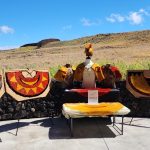
An Unexpected Lesson in Travel Barriers
When planning a journey, many of us have encountered moments that feel as if we’ve been met with a “403 Forbidden” sign—a barrier that stops us cold, much like the website error message that denies access to forbidden content. In the digital world, this error is a reminder that sometimes, permissions are missing or access isn’t allowed. In the realm of travel, similar experiences occur when a destination appears closed off or unavailable, leaving us to ponder what lies behind the locked door. My recent reflections on this intersection of technology and travel have led me to an opinion that resonates with explorers: moments of denial on our paths can spark deeper insights into how we approach and appreciate the unexpected twists and turns of our journeys.
In this editorial, I’m going to take a closer look at these off-putting travel moments, compare them with the digital “403 Forbidden” response, and share practical tips that can help you steer through those moments when what you seek seems out of reach. By doing so, we can find value not in the destination itself, but in the process of overcoming the barriers and uncovering a new perspective on travel.
When Travel Paths Seem to Say “Access Denied”
There’s a moment in every trip when you stumble upon an area or destination that appears to be off limits. It might be a quaint village with “No Entry” signs, a stunning hiking trail closed for preservation, or a historical site that restricts access to a few chosen visitors. These situations remind us of the “403 Forbidden” message when trying to access a website without having the proper rights.
Much like the confusing bits of server error messages, these travel denials can be intimidating and even off-putting at first glance. They might seem like the result of a mistake or a miscommunication, but more often than not, they invite us to think differently about what it means to really “travel.” Instead of being simply frustrated, a seasoned traveler learns how to find your way around these barriers, uncovering hidden gems and unexpected detours along the path.
Understanding the “No Entry” Zones in Travel
When you’re out exploring, encountering closed or forbidden zones can be nerve-racking. Whether it’s a protected natural reserve, a private archaeological site, or even an area under restoration, these places come with strict guidelines. The reasons behind these restrictions are often rooted in protecting the environment, preserving cultural heritage, or ensuring public safety. While the immediate impulse may be to feel disappointed, taking the time to understand the rationale can turn these tricky parts into learning opportunities.
When you’re eager to take a closer look at such places, it’s important to remember that not every destination is open for public access. The reasons are many, and they can be organized into a few key points:
- Environmental Protection: Many areas are restricted to preserve fragile ecosystems or endangered wildlife.
- Cultural Preservation: Certain historical sites are closed off to maintain the integrity of ancient artifacts and structures.
- Safety Concerns: Some locations have dangerous terrain or deteriorated infrastructure that makes visitor entry risky.
- Limited Capacity: In some cases, the number of visitors is controlled to prevent overcrowding, which can harm both the location and the visitor experience.
In each case, the challenges may initially appear nerve-racking, but once you get into the reasons behind them, you begin to appreciate the inherent respect and care devoted to these spaces.
Interpreting the 403 Forbidden in a World of Travel
At first glance, the technical message “403 Forbidden nginx” might seem entirely unrelated to the art of travel. However, if we work through a comparison between the digital and physical worlds, we discover plenty of surprising similarities. In the world of websites, getting a 403 error means that you’re not permitted to view what’s there—either because of missing authentication or strict security protocols. On your travel adventures, the same principle might apply to hidden locations or resource-rich sites that are off limits to preserve their uniqueness or protect them from misuse.
Consider these key similarities:
| Digital Barrier | Travel Barrier |
|---|---|
| 403 Forbidden error due to missing permissions | Restricted entry into a historical site or protected area |
| Access denied by a website’s security settings | Local laws or cultural norms that prevent tourists from entering certain areas |
| Error message that encourages you to log in or seek permission | Signage or local guidance indicating that special permits or restrictions apply |
This table illustrates a clear parallel between the two worlds: in both cases, a kind of boundary is set to protect something valuable. When you see that forbidden sign—whether on a website or at a travel destination—it’s a subtle reminder to respect the limitations and regulations in place. The hidden treasures that lie behind these barriers might be best appreciated from a respectful distance, or after undertaking the proper channels to gain access.
Comparing Online and Offline Barriers: A Closer Look
Diving into the comparison between online errors and travel restrictions reveals fine points and subtle details that are more similar than they might appear at first. Both systems are designed to prevent unintentional harm, whether it’s to a computer system or a delicate natural habitat.
Here’s a breakdown of the online versus offline restrictions:
- Purpose: Online errors aim to safeguard data and prevent unauthorized changes. Similarly, travel barriers exist to protect the integrity of a site or environment.
- Management: Both require the right permissions—whether that’s a login credential or a permit issued by local authorities.
- Response: Instead of ignoring the barriers, the best approach is to respect them and follow the procedures set in place.
Much like a traveler who finds themselves confronted with off-limit areas, online users have come to accept that technology, with all its twists and turns, sometimes needs boundaries. In both worlds, these limits are not arbitrary but are driven by a super important need to preserve something of value.
Finding Your Way Through Roadblocks
When faced with obstacles on your travels, the key is to find your way around them with creativity and patience. It can be tempting to get frustrated by what appears to be a closed door, but often these moments offer a chance to discover something entirely unexpected. Consider how a travel itinerary might be reworked when a well-known attraction is closed—a detour might lead you to a quiet village, a hidden café, or a scenic overlook that few other tourists know about.
Here are some strategies for managing your way through these off-putting detours:
- Do Your Research: Before setting out, dig into local travel blogs, tourism websites, and community forums to understand which areas might present restricted access and why.
- Ask Locals: Sometimes the best information comes from people who live in the area. They can share insights on alternative routes or help you figure a path around official closures.
- Flexibility in Plans: Keeping a flexible itinerary allows you to take advantage of unexpected opportunities. Flexibility is key when the planned attraction turns out to be a no-go zone.
- Respect the Rules: Understanding that rules exist for a reason will help you stay safe and often lead to a richer travel experience.
While these approaches might require extra time and effort, they also open up avenues for serendipitous discovery. What starts as an intimidating or overwhelming situation can quickly become a memorable chapter in your journey—as long as you remain open to the unexpected.
Learning from the Blocked Paths
Sometimes, the most memorable experiences in travel come not from what you see, but from what you learn when your plans take an unforeseen detour. In making your way around a closed-off area, you might encounter:
- Local Culture: A blocked path often forces you to interact with locals, who can offer a unique perspective on the destination and its hidden stories.
- Alternative Attractions: Many times, guides and locals know of lesser-known sites that are just as interesting as the popular tourist spots.
- Personal Growth: Overcoming these small travel challenges helps build confidence and teaches you to appreciate the journey, not just the destination.
In essence, each blocked road is a lesson in resourcefulness and adaptability. It’s important to recognize that these moments are part and parcel of the travel experience. They may seem intimidating at first, but once you learn how to find your way through them, you open yourself up to a richer, more fulfilling adventure.
The Role of Technology in Enhancing Travel Experiences
Today’s travelers are immersed in a world where technology plays a critical role in enriching and directing our journeys. Much like encountering a “403 Forbidden nginx” error can prompt you to re-examine your online approach, technology today helps us steer through the complicated pieces of travel planning. Smartphones, navigation apps, online forums, and travel blogs offer real-time insights into which areas may be restricted or have changed due to local regulations.
When planning an adventure, consider using technology to:
- Monitor Updates: Follow local news and official tourism pages on social media for updates on closures or restrictions.
- Leverage Navigation Tools: GPS and map applications can help you figure a path if a usual route is inaccessible.
- Review Community Feedback: Online travel forums and review sites are rich with discussions on off-the-grid locations and insider tips on bypassing roadblocks.
- Digital Reservations: For some coveted destinations, obtaining early permits or reservations online can secure a spot before the area becomes overcrowded or inaccessible.
These technological aids not only help prevent nerve-racking scenarios but also highlight the importance of staying informed. By effectively using digital tools, you can mitigate the effect of sudden travel restrictions and continue your journey with confidence.
The Intersection of Digital Errors and Real-World Barriers
Reflecting on the digital error “403 Forbidden nginx,” it’s striking how both worlds—online and in-person travel—face similar issues of access, permission, and control. Both realms can be full of problems when the wrong key (or permission) is missing. Establishing a thorough understanding of the importance of these barriers can ultimately encourage respect for the systems in place, be they digital firewalls or physical ones.
Consider the following side-by-side comparison:
| Digital World | Travel World |
|---|---|
| Access requires the right password or token | Entry demands the proper permit or local guidance |
| Restricted content is protected to maintain security | Restricted locations are preserved to ensure sustainability |
| Error messages alert you that you’re not authorized | Warning signs and local laws indicate that access is not permitted |
This alignment of digital and physical landscapes teaches us that both are designed to protect something valuable. Whether it’s data stored on a server or a unique cultural heritage site, respecting these boundaries is essential for long-term preservation and responsible enjoying.
Exploring the Philosophy Behind “Forbidden” Destinations
Beyond the practical considerations, there is an underlying philosophy in seeking out places that are off limits. Often, the allure of a forbidden destination lies not just in the promise of adventure, but in the knowledge that the journey towards it can be as enriching as stepping into it. The idea of encountering the “403 Forbidden” in travel challenges us to rethink our relationship with boundaries.
When you get into the spirit of exploring the mystery behind these limits, you begin to ask deeper questions such as:
- What makes a place valuable enough to be protected?
- How does limitation enhance our appreciation of what is available?
- Can the tension of being denied entry lead to alternative discoveries?
Many travelers find that the journey to understand and appreciate these closed-off areas is itself a rich experience. The hidden complexities of these destinations—those fine points and little details that remain unseen—invite us to inspect the balance between accessibility and preservation. Rather than viewing restrictions as an agonizing hindrance, consider them as a challenge: a call to figure a path that respects the fragile beauty of what is being protected.
A Journey of Mindful Exploration
An essential part of travel is the willingness to adapt and uncover beauty in unexpected places. It requires a flexible mindset and the readiness to hit the road when a planned destination is suddenly out of bounds. Such moments, while initially overwhelming, often lead to a more mindful style of exploration. Instead of pushing against the constraints, many travelers learn to embrace the detours as spaces for reflection and personal growth.
The benefits of this approach can be seen in several key areas:
- Increased Flexibility: Accepting that not every plan will come to fruition makes you more adaptable and open to new experiences.
- Enhanced Curiosity: A blocked path can spur curiosity, encouraging you to dig into local history and culture.
- Deeper Connection: Interacting with locals and learning the reasons behind restrictions can foster a deeper connection with the place you are visiting.
Travel, like many other adventures, is about celebrating the journey as much as the destination. The moments when you encounter a “403 Forbidden” – whether in an online context or in a real-world setting – serve as reminders that every barrier has a story. They prompt us to adapt, learn, and ultimately find beauty in the process of patiently exploring.
Personal Reflections on Travel and Access Limitations
There have been times during my own travels when I’ve felt the sting of a closed door. I remember arriving at a scenic overlook in a remote mountainous area only to find it cordoned off due to environmental protection efforts. The initial frustration was palpable—the excitement of tasting nature’s bounty was quickly replaced by the realization that the path was blocked. Yet after a moment of reflection, I began to appreciate the measures in place that guarded a delicate ecosystem.
Over the years, I’ve come to understand that these moments of denial contribute to a richer, more layered understanding of travel. Instead of being discouraged by a simple “access denied” message, I learned to see these events as opportunities to:
- Engage with local authorities and learn their perspective.
- Survey alternative routes and uncover unexpected attractions.
- Reflect on the broader impact of tourism on fragile sites.
This internal shift—from frustration to respectful curiosity—helps you get away from a narrow view of what travel should be and allows you to embrace the full scope of the journey. After all, just as the “403 Forbidden” message on a web page prompts you to check your permissions and try again later, these travel hiccups invite you to take a step back, assess your surroundings, and appreciate the beauty of controlled access.
Respecting Boundaries for a Sustainable Future
Respect for restrictions is not simply about following rules—it’s a commitment to preserving our world for future generations. Whether applied online or in the physical realm of travel, honoring these boundaries is a sign of responsible exploration.
Here are a few reasons why respecting access limitations is super important:
- Environmental Sustainability: Restricted zones in nature ensure that wildlife and ecosystems have a chance to recover and thrive.
- Cultural Integrity: Many communities place limits on visitor access to maintain the authenticity of their culture and traditions.
- Visitor Safety: Rules and restrictions often exist to protect visitors from unforeseen dangers in poorly maintained or hazardous areas.
By accepting that some areas are off limits, you’re actively contributing to the sustainability of both natural landscapes and cultural heritage. In doing so, you’re not only enhancing your own travel experience through more meaningful interactions but also ensuring that these beautiful locations remain intact for others to enjoy.
Looking Ahead: Embracing Challenges as Opportunities
As our world evolves and travel becomes even more intertwined with technology, the lines between online restrictions and physical limitations continue to blur. The “403 Forbidden” error is more than just a technical glitch—it’s a metaphor for many of the restrictions we encounter in life. And while these obstacles might seem intimidating at first, they also present unique opportunities to adapt and learn.
Moving forward, travelers can benefit from a mindset that sees challenges not simply as dead ends but as invitations to explore alternative paths. Whether it’s a hidden corner of a historic town shielded from mass tourism or an online resource that requires a different sort of access, each barrier has the potential to offer a new perspective if you are willing to approach it with respect and curiosity.
Actionable Steps for Future Explorations
Here are some tried-and-true strategies for turning travel challenges into vibrant opportunities:
- Keep an Open Itinerary: Instead of rigid plans, maintain a flexible travel schedule that allows room for spontaneous detours. This openness can transform a seemingly closed-off area into a gateway for unexpected adventure.
- Engage With Locals: Sometimes, the local community has deep-rooted wisdom about alternative sites that are not widely advertised. Chatting with residents can reveal hidden trails and lesser-known attractions.
- Use Technology Wisely: Leverage apps and local network resources that provide real-time updates on access limitations and local events. This can help you adjust your plans on the fly.
- Document Your Journey: Keep a travel journal or blog to record the lessons learned when faced with obstacles. Sharing your experiences can help others see the beauty in unexpected detours.
By integrating these methods into your travel planning, you’re effectively turning the challenges of forbidden paths into an essential part of a richer travel narrative.
Final Thoughts: Rewriting the Narrative of “Forbidden”
It’s easy to view travel restrictions as frustrating setbacks, much like encountering a “403 Forbidden” error in the digital realm. Yet, if we reframe these moments as a natural and even necessary part of the travel process, we open up a world of possibilities. Every denial, every closed door, and every off-limit sign is an invitation to explore further, think deeper, and appreciate the hidden layers of our world.
As we continue to work through and figure a path around the challenges we encounter, we grow not only as travelers but as individuals who cherish the richness of the experiences along the way. Whether you’re navigating winding trails in remote landscapes or troubleshooting a technical roadblock online, remember that sometimes the journey is far more important than the destination itself.
In both digital and physical realms, the barriers we face are there to remind us that freedom often comes with responsibility. By respecting these boundaries and appreciating the reasons behind them, we contribute to a legacy of sustainable, respectful travel that honors the beauty and integrity of the world around us.
So next time you’re planning your adventure, keep in mind that encountering a “403 Forbidden” moment—be it online or off the beaten path—might just be nature’s way of encouraging you to look a little closer, dig into the story behind the signage, and embrace the journey with open eyes. After all, sometimes the detours reveal the most unexpected and rewarding experiences.
A Journey of Resilience and Discovery
Ultimately, every traveler knows that the road to discovery is paved with unexpected twists and turns. The frustrating message on a computer screen, the sign on a hidden gate, or even an off-limits marker on a map are all reminders that not everything is given freely. It is our responsibility—and our privilege—to work through these tangled issues with grace and positivity. Embrace each obstacle as a stepping stone toward resilience, a chance to learn and grow, and a beacon that guides you to uncharted territory ripe with possibility.
Let this editorial serve as a gentle reminder that the beauty of travel lies in its unpredictability. When faced with barriers that seem impenetrable, remember the wisdom behind every “access denied” message: sometimes, what appears forbidden is simply waiting for the right time and the right approach to be truly appreciated.
In our journey through life and travel, each of these moments teaches us a timeless lesson—one of respect, adaptability, and the courage to explore beyond the obvious. Whether you are an avid globetrotter or a curious wanderer, may you always find the strength to figure a path through the challenging yet enriching moments that make every adventure unique and deeply rewarding.
Originally Post From https://www.seattletimes.com/life/lifestyle/rant-and-rave-457/
Read more about this topic at
Access Denied on several sites? : r/techsupport
Access denied to basic websites


